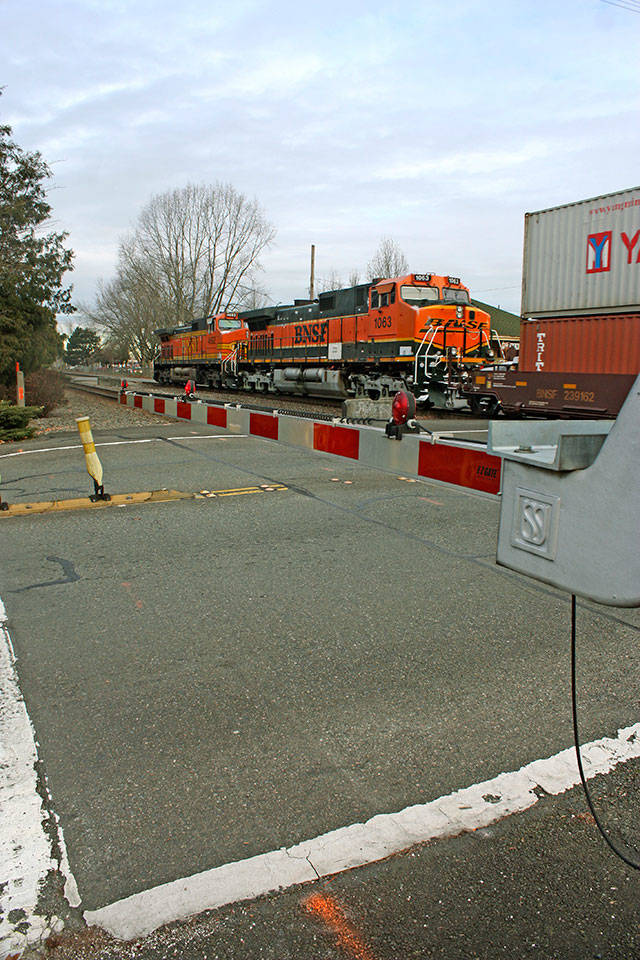Most of the Kent City Council seemed to be on board to spend about $3 million for a quiet zone at downtown railroad crossings as part of its 2018 budget adjustment.
But the council remained uncertain at a Tuesday night budget workshop about how much to raise property taxes or whether to boost the business and occupation (B&O) square footage tax.
The funds for a quiet zone would pay for railroad safety measure upgrades (traffic signals, flashing lights, medians, gates, signs, fencing) at as many as 13 crossings so that train engineers would no longer need to blow their horns (except in emergencies) while speeding through town. Mill Creek neighborhood residents proposed the idea of a quiet zone to the city about seven years ago to improve quality of life for people who live and work in the area where the loud horns disrupt sleep and conversations.
The council would spend $1.4 million in general fund reserves, $600,000 from the street capital budget and an estimated $1 million (if costs go that high) from the capital reserve fund to pay for a quiet zone.
“We’re going to make it as cost effective as we can,” said Chad Bieren, city Public Works deputy director, to the council. “Part of our discussion with Union Pacific was to throw out everything they wanted to add that wasn’t required to get the quiet zone established through the Federal Railroad Administration.”
City staff will have similar discussions with BNSF Railway officials to help determine costs for the additional safety measures.
Council members have another budget workshop on Nov. 21 and will vote on the budget on Dec. 12. No votes are taken at workshops.
Property tax jump
Most of the council appears to favor using at least a portion of the city’s $6.4 million in banked property tax capacity to help cover a $2.3 million gap next year in the $98 million budget. That hike would add about $37 per year to property assessed at $300,000.
Kent has banked capacity because the city reduced its property tax levy by $1.00 per $1,000 assessed valuation in 2011 after voters in 2010 approved the formation of the Kent Fire Department Regional Fire Authority (now Puget Sound Fire), which levies a property tax of $1.00 per $1,000 assessed valuation. The use of banked capacity allows the city to raise property taxes above the 1 percent annual state cap imposed by Initiative 747 approved by voters in 2001.
The council continued to debate whether to use all of the banked capacity starting next year (which would jump taxes to $105 per year for property assessed at $300,000) or spread out the tax increases over three years.
B&O tax hike
The council is scheduled to vote Tuesday, Nov. 21, on whether to double the B&O warehouse square footage tax to bring in about $3 million annually for capital and major maintenance projects in the park system or other capital improvement projects.
About 680 businesses would be impacted the tax hike, according to city staff. The council’s Operations Committee voted 2-1 on Nov. 7 to move the proposal to the full seven-member council. Bill Boyce and Mayor-elect Dana Ralph voted in favor of the measure, Les Thomas voted against it.
Talk to us
Please share your story tips by emailing editor@kentreporter.com.
To share your opinion for publication, submit a letter through our website https://www.kentreporter.com/submit-letter/. Include your name, address and daytime phone number. (We’ll only publish your name and hometown.) Please keep letters to 300 words or less.

